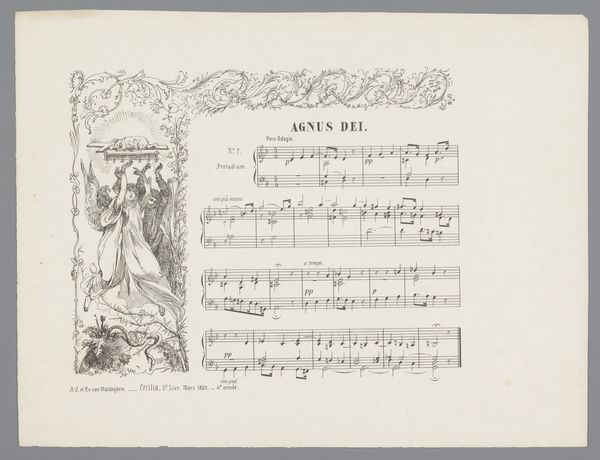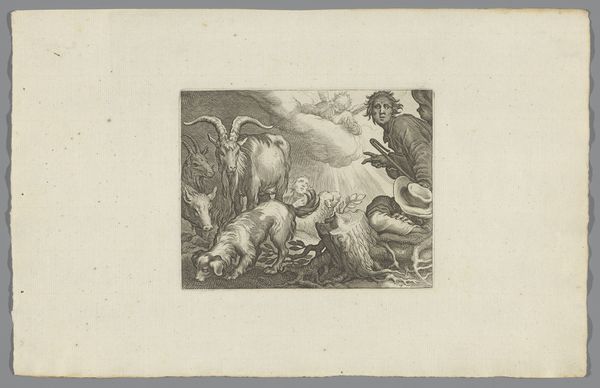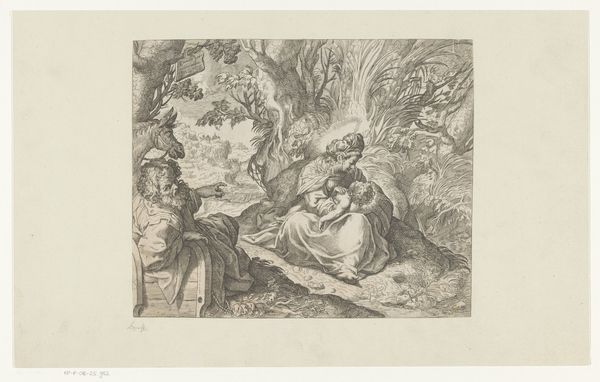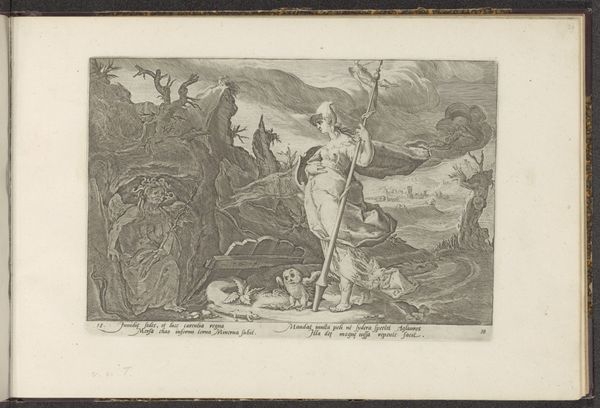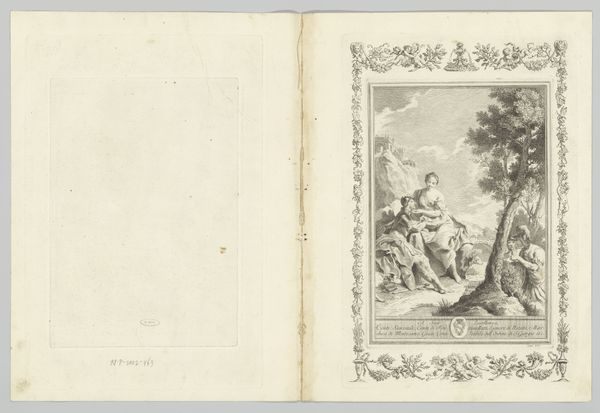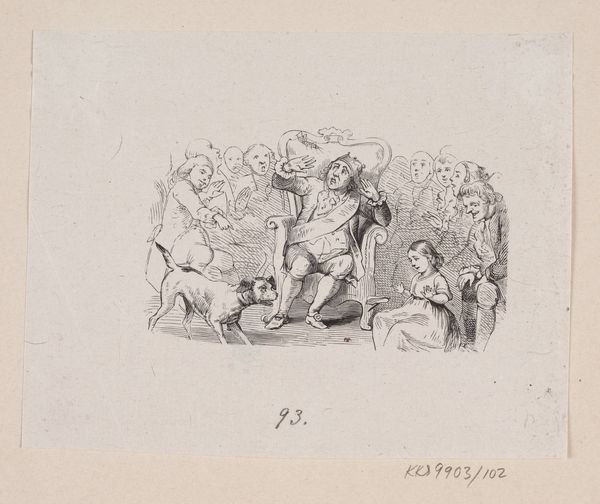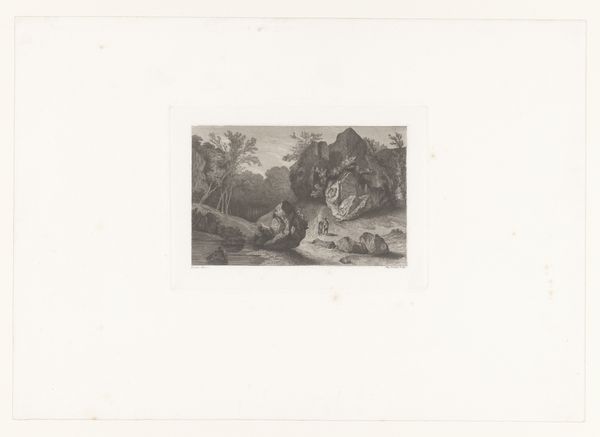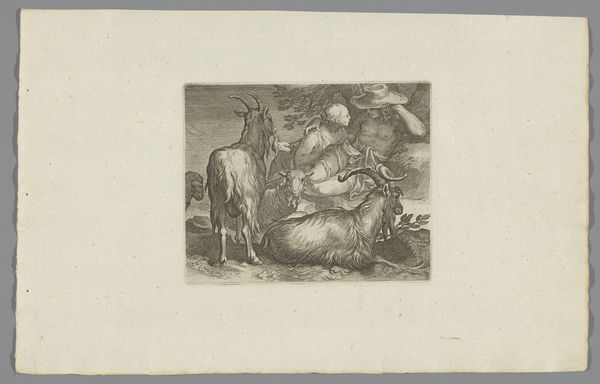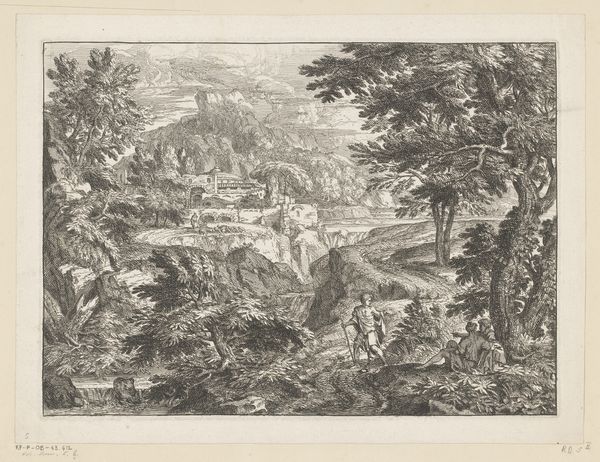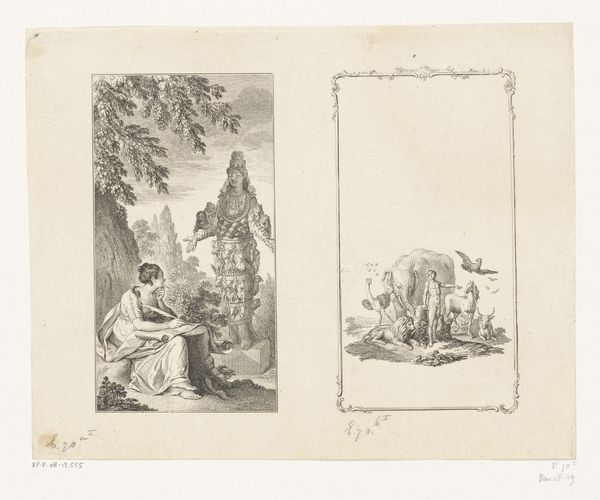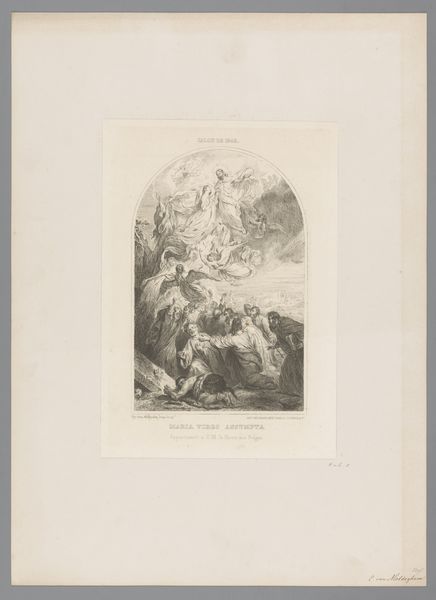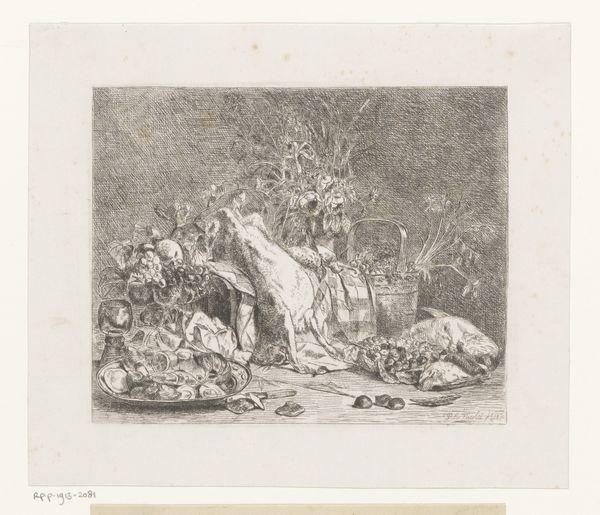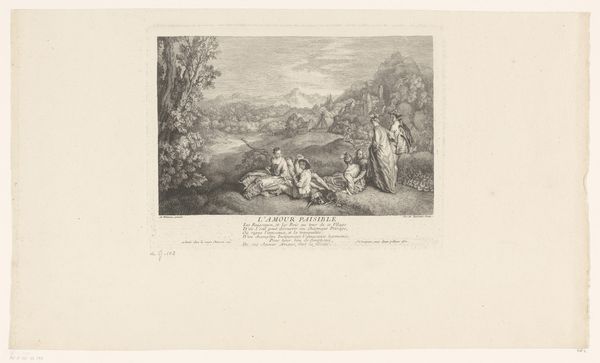
drawing, print, paper, ink, engraving
#
drawing
#
narrative-art
# print
#
figuration
#
paper
#
ink
#
group-portraits
#
romanticism
#
history-painting
#
engraving
Dimensions: height 272 mm, width 358 mm
Copyright: Rijks Museum: Open Domain
Eugène Van Maldeghem created this print, "The Dead Arise for the Last Judgement," using lithography. Lithography is a printing process that relies on the contrast between greasy and non-greasy areas on a stone or metal plate. The artist draws an image with a greasy crayon or ink, and then the plate is treated so that ink adheres only to the drawn areas, allowing the image to be printed. The linear quality and tonal range you see here are directly related to the way the artist applied the greasy medium to the lithographic stone. This print is of course also related to the commercialization of art in the 19th century, where artists and printmakers could produce multiple copies for a wider audience. It democratized image-making, though it also relied on a division of labor, with some artists creating the designs and others executing the prints. Understanding the printmaking process helps us appreciate the skill involved in creating this compelling image of the resurrection. It also reminds us of the broader social and economic forces that shaped artistic production in the 19th century.
Comments
No comments
Be the first to comment and join the conversation on the ultimate creative platform.
